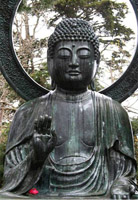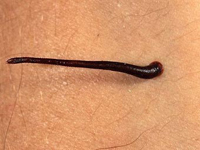Tibet is often called «Roof of the Mira», After all, it is located on the highest and extensive on Earth Tibetan Highlands. The fundamental position of Tibetan medicine is the principle of materialistic unity of the external environment and the body.
Content
The basic concepts of Tibetan medicine
 Tibet is often called «Roof of the Mira». It is located on the extreme southwest of China, on the highest and most extensive on Earth Tibetan Highlands. Tibet is located at an altitude of approximately four thousand meters above sea level, and the height of some of its mountains exceeds seven thousand meters. For this Tibet and got its name «Roof of the world», After all, his population lives closest to the sun.
Tibet is often called «Roof of the Mira». It is located on the extreme southwest of China, on the highest and most extensive on Earth Tibetan Highlands. Tibet is located at an altitude of approximately four thousand meters above sea level, and the height of some of its mountains exceeds seven thousand meters. For this Tibet and got its name «Roof of the world», After all, his population lives closest to the sun.
Tibet is considered a treasury of indiscrect wealth of China, as well as the birthplace of Tibetan medicine, one of the most ancient, reached by medical and philosophical schools. The philosophical foundations of Tibetan medicine are rooted in Buddhism, which penetrated Tibet in the first half of the seventh century, during the Board of King Sonten Gampo (627-649). It is believed that it was he who invited doctors to Tibet from India, China, Nepal, Byzantium and Persia to exchange knowledge and translating medical texts to Tibetan. It was the beginning of the creation of a complex medical system and the beginning of many years of sharing experience.
In India, in the sixth century BC, various health practices have already been known, according to legend, Buddha Shakyamuni, who is sometimes called the Supreme Physician, became the first who used and taught these practices. It is believed that Indian Buddhist Medicine (Ayurveda) and served as a kind of prototype of Tibetan medicine.
From the point of view of Buddhist philosophy, the disease begins to be born in the depths of the mind, and then implemented on the material level. But with the disease of the physical body, disorders at the level of psyche and emotions occur. The harmony of the highest levels determines the harmony of the lower levels.
Principles of Tibetan medicine
The fundamental principle of Tibetan medicine is the principle of materialistic unity of the external environment and the body. It is believed that a living organism and its environment consist of four primary elements of matter - fire, water, land and air. These material elements in a living organism provide the functions of physiological regulatory systems: «Rlung» - wind, «MKHRIS» - bile, «Badkan» - mucus, which are defined as neurohumoral mechanisms.
According to Tibetan medicine, the human body consists of seven elements:
- Plasma - Nutrient Liquid
- Blood - Life Strength
- Muscles - «clothes» for bones
- Fatty fabric - lubricating substance
- bones and cartilage - help stand and walk
- Bone marrow
- Nerves - Nervish Tissue Nutrition
- Cum / egg cell - Reproduction
The sequence in which lists the elements corresponds to the sequence of their formation in the body. Each subsequent element appears in the process of metabolic cleansing of the previous.
The following elements in Tibetan medicine are substances that the body usually removes itself in the process of forming and maintaining the above seven elements: Cal - removes toxins in solid form through the colon; urine - removes toxins in liquid form through the kidneys; sweat - removes toxins through the pores in the skin.
It is believed that physical health is determined by the balance of the three main systems in the body: wind, bile and mucus. The most common and efficient diagnostic method is pulsodiagnostics and urine analysis. It is believed to listen to the pulse of the patient better at the dawn, after night sleep.
However, it should not be thought that the diagnosis is determined only by frequency and the power of the pulse. During the reception, the doctor carefully examines the patient, receiving complete information about his health, due to the total tone, the state of the skin, eye, language and other features. As a rule, the effectiveness of treatment depends on the doctor and its experience.
Medicines in Tibetan medicine
In Tibetan medicine, for treatment and prevention, animal and vegetable medicine are widely used, the effects on the body using massage, acupuncture, and a patient conversation are practiced, and there are also cases of shaman practitioners.
Thus, in the traditional system of Tibetan medicine, all the basic principles and regulations on micro- and macromir are hierarchically connected with centuries-old experience, knowledge of the organization of living systems, which are anticipation of chronobiology, chronomedicine and chronofarmacology.
Study of sources of Tibetan medicine, in particular «Chzzh Shi» and «Vaiduria-Onbo», It showed that the Tibetan traditional medicine system has a holistic multi-level hierarchical structure with specific blocks of theoretical concepts, diagnosis, methods and treatments.









